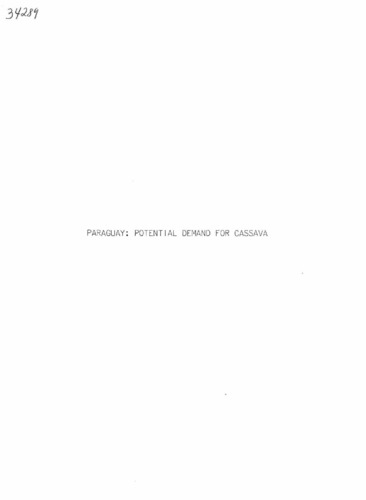Paraguay: Potential demand for cassava
A brief analysis is made of colonization, price and commercialization, credit, research, and extension policies and their impact on agriculture in Paraguay. The present status of cassava consumption, production, and distribution is then reviewed to determine potential and projected demand. Time series data were used to calculate the effects of changes in income, prices, and urbanization trends on the per capita consumption of cassava. Cassava is very important in Paraguay, where it (1) generates more employment than other crops; (2) produces the most by volume; (3) is 3rd in terms of gross domestic product (after soybeans and cotton); and (4) is the most important source of carbohydrates. Together with maize, cassava constitutes the basic source of feed for pigs, which supply 43 percent of all the meat consumed in the country. The use of dried cassava in animal feed is not economically attractive because farmers get twice as much per kg selling cassava in the fresh market. There is great potential for CIAT's fresh cassava storage technology. Colonization policies have indirectly led to increased production, beyond already high levels. To meet the projected demand by the yr 2000, an additional 80,000 ha will have to be planted. (CIAT)

